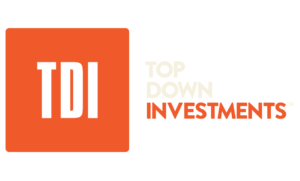As you may know, Top Down Investments is a real estate investment company specializing in unlocking the hidden value of properties using Creative Strategies. Using a non-traditional strategy in real estate investing can give you a slight edge over your competitors as you can take a bad deal to a good deal. This gives you more opportunities, especially in competitive markets where the good deals are gone before they even hit the market.
One of the key creative strategies we utilize is Creative Financing, our definition of Creative Financing is any type of financing that falls outside of the conventional “norm”. We will be discussing three different types of Creative Financing in this article, those are Vendor Takeback Financing (VTB), Option to Purchase, Private Lending.
Let’s Get Started!
Let’s talk about Vendor Takeback Financing first, Vendor Takeback Financing is a real-estate agreement in which the seller handles some, or all, of the mortgage proceeds instead of a financial institution. Instead of applying for a conventional bank mortgage, the buyer signs a mortgage agreement with the seller and if the purchaser defaults, then the seller will retain their property. If it is a VTB for only a portion, then the conventional bank will want to know the details of the VTB and will use that information when calculating the debt on the property. That “split” financing will usually have a negative impact on the total amount of proceeds the conventional lender will give you as the debt is based on what the property will service.
Pros of Vendor Takeback Financing:
Some of the pros to Vendor Takeback Financing for the buyer are less underwriting, easier qualification than bank financing options, negotiable terms, lower closing costs, can close faster, higher LTV (Loan to Value). The cons of Vendor Takeback Financing as a buyer are minimal however you should still be aware of them. They are potentially higher interest rate, less desirable terms, payments may not be reported to a credit bureau. Most of the cons of Vendor Takeback Financing come down to your agreement with the seller and the terms they are willing to agree to.
The pros to Vendor Takeback Financing as the seller are that they can assist in selling the property faster, is a form of passive cash flow and tax deferral, can be used to grow an investment or retirement portfolio, reduces the tax burden of capital gains and depreciation re-capture over several years, the loan is secured by the property. Cons for Vendor Takeback Financing as the seller are specific loan underwriting and loan servicing rules as well as the risk of default which can hold the seller responsible for unpaid taxes, liens, poor property condition, and the cost of foreclosing.
Moving Onto Other Options…
Next up is the Option to Purchase, An Option to Purchase is an agreement between two parties to facilitate a potential transaction involving an asset at a pre-set price and date. Option Agreements offer the right, but not the obligation, to purchase or sell the underlying asset. Why are option agreements useful? Some of the reasons are that it secures your ability to purchase the property at a future date, if the market price becomes undesirable you aren’t obligated to close, if market is up at time of close you only pay the agreed upon purchase price, and it can buy time while you work on getting conventional lending in place.
Last but not the least is Private Lending, Private lending is typically money that is borrowed from a private lender which is either secured, or unsecured, against an asset. It is almost always done with a promissory note at minimum. Private lending can be risky but some of the pros are loan proceeds can be used for anything, loan does not show up for other lenders, can be unsecured or secured against other properties, easier to acquire, terms are flexible and negotiable. Some of the reasons private lending can be risky is higher interest rates, typically short term, easy to overleverage yourself, can have negative cashflow impacts on a project.
Are you going to use any of these Creative Financing Strategies?
Want more information?
LET’S TALK!



